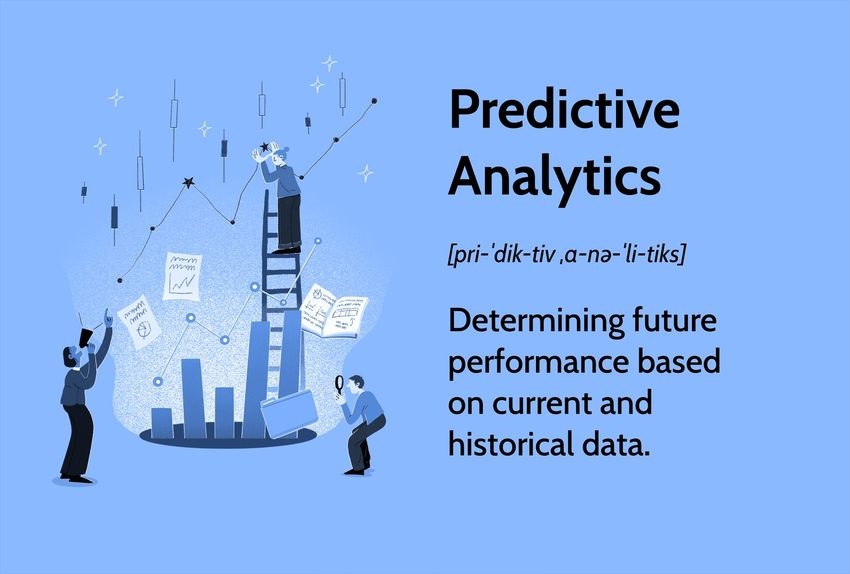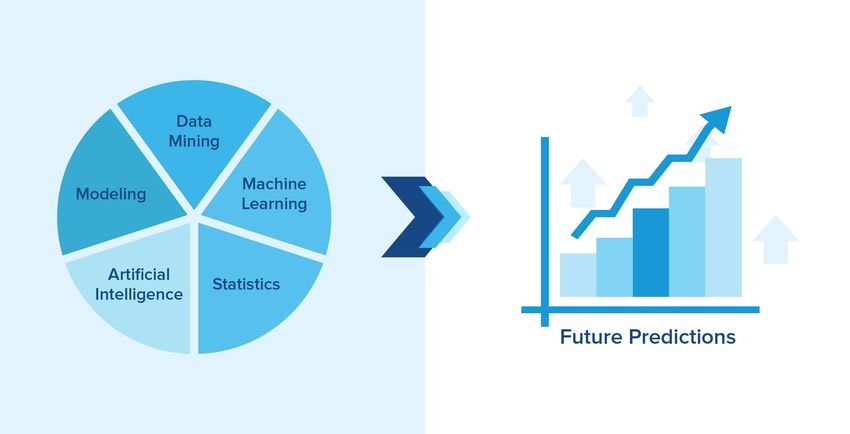Predictive analytics is a branch of advanced analytics that uses historical data, statistical algorithms, and machine learning techniques to forecast future outcomes. It empowers businesses and organizations to anticipate trends, reduce risks, and make informed decisions. Over the years, predictive analytics has grown from a niche capability into a mainstream tool for driving success across various industries.

In this article, we’ll dive into what predictive analytics is, how it works, its applications, benefits, and challenges.
What is Predictive Analytics?
Predictive analytics involves analyzing historical and real-time data to predict what is likely to happen in the future. It does this by:
- Identifying Patterns: Algorithms uncover trends and relationships within data.
- Forecasting Outcomes: Models predict future events or behaviors based on existing patterns.
- Supporting Decision-Making: Insights guide strategies to achieve desired outcomes or mitigate risks.
Predictive analytics is not about crystal ball predictions but about using data and technology to enhance foresight and strategic planning.
How Predictive Analytics Works
Predictive analytics relies on a multi-step process to deliver actionable insights:
- Data Collection:
- Historical and current data are gathered from various sources such as databases, sensors, CRM systems, and social media.
- Data Preprocessing:
- Raw data is cleaned, organized, and prepared for analysis. This includes handling missing values, removing duplicates, and ensuring data consistency.
- Feature Engineering:
- Key variables or “features” are selected or created to improve model accuracy.
- Model Building:
- Machine learning algorithms, such as linear regression, decision trees, or neural networks, are trained using historical data.
- Validation and Testing:
- Models are validated using unseen data to evaluate their accuracy and reliability.
- Deployment:
- The predictive model is integrated into decision-making systems for real-time use.
- Continuous Monitoring and Improvement:
- Models are refined and retrained periodically as new data becomes available.
Applications of Predictive Analytics
Predictive analytics has found applications across numerous sectors, transforming industries by enabling smarter decisions. Here are some prominent examples:
1. Marketing and Customer Insights
- Personalized Recommendations: E-commerce platforms like Amazon use predictive analytics to suggest products based on past purchases.
- Customer Churn Prediction: Companies identify customers likely to leave and implement retention strategies.
- Ad Targeting: AI algorithms predict user preferences to deliver highly targeted advertisements.
2. Healthcare
- Disease Prediction: Predictive models identify patients at risk of chronic illnesses or complications.
- Operational Efficiency: Hospitals optimize staffing and resource allocation based on predicted patient influx.
- Drug Development: Predictive analytics accelerates clinical trials by identifying promising candidates for testing.
3. Finance
- Fraud Detection: Banks use predictive models to flag suspicious transactions in real time.
- Credit Scoring: Predictive analytics evaluates an individual’s likelihood of repaying loans.
- Stock Market Trends: Algorithms forecast market movements, enabling smarter investment decisions.
4. Supply Chain and Logistics
- Demand Forecasting: Retailers predict inventory needs based on seasonal trends, customer behavior, and external factors.
- Route Optimization: Predictive models identify the fastest and most cost-effective delivery routes.
- Risk Management: Companies anticipate supply chain disruptions and mitigate risks proactively.
5. Energy and Utilities
- Energy Demand Forecasting: Utility companies predict electricity usage to optimize power generation.
- Predictive Maintenance: AI models predict equipment failures, reducing downtime and maintenance costs.
- Smart Grids: Predictive analytics improves the efficiency of energy distribution networks.
6. Education
- Student Performance Prediction: Schools and universities identify students at risk of underperforming and provide early interventions.
- Curriculum Personalization: Predictive models tailor learning materials to individual student needs.
7. Manufacturing
- Quality Control: Predictive analytics identifies defects early in production processes.
- Production Planning: Factories optimize schedules based on anticipated demand.
- Machine Maintenance: AI predicts when equipment will fail, enabling proactive maintenance.
Benefits of Predictive Analytics
Organizations leveraging predictive analytics gain a competitive edge in several ways:
- Informed Decision-Making: Data-driven insights reduce reliance on guesswork.
- Proactive Strategies: Predictive analytics helps organizations anticipate and prepare for challenges.
- Cost Savings: By improving efficiency and minimizing risks, predictive analytics reduces operational costs.
- Improved Customer Experience: Personalized services and timely interventions enhance customer satisfaction.
- Innovation: Insights from predictive models drive the development of new products and services.
Future of Predictive Analytics
With advancements in AI and machine learning, the future of predictive analytics is promising:
- Real-Time Predictions: Integration with IoT and edge computing enables instant predictions and decisions.
- Explainable AI: Efforts to make predictive models more interpretable will improve trust and adoption.
- Scalability: Cloud-based solutions make predictive analytics accessible to businesses of all sizes.
- Cross-Disciplinary Applications: Predictive analytics will continue to evolve, influencing sectors like agriculture, defense, and urban planning.
Conclusion
Predictive analytics is a transformative technology that empowers organizations to harness the power of data for future planning and decision-making. By identifying patterns and forecasting outcomes, it enables proactive strategies, reduces risks, and unlocks opportunities across industries. While challenges remain, the continual evolution of technology promises to make predictive analytics more powerful, accessible, and ethical in the years to come.
Embracing predictive analytics is no longer optional—it’s essential for thriving in today’s data-driven world.


